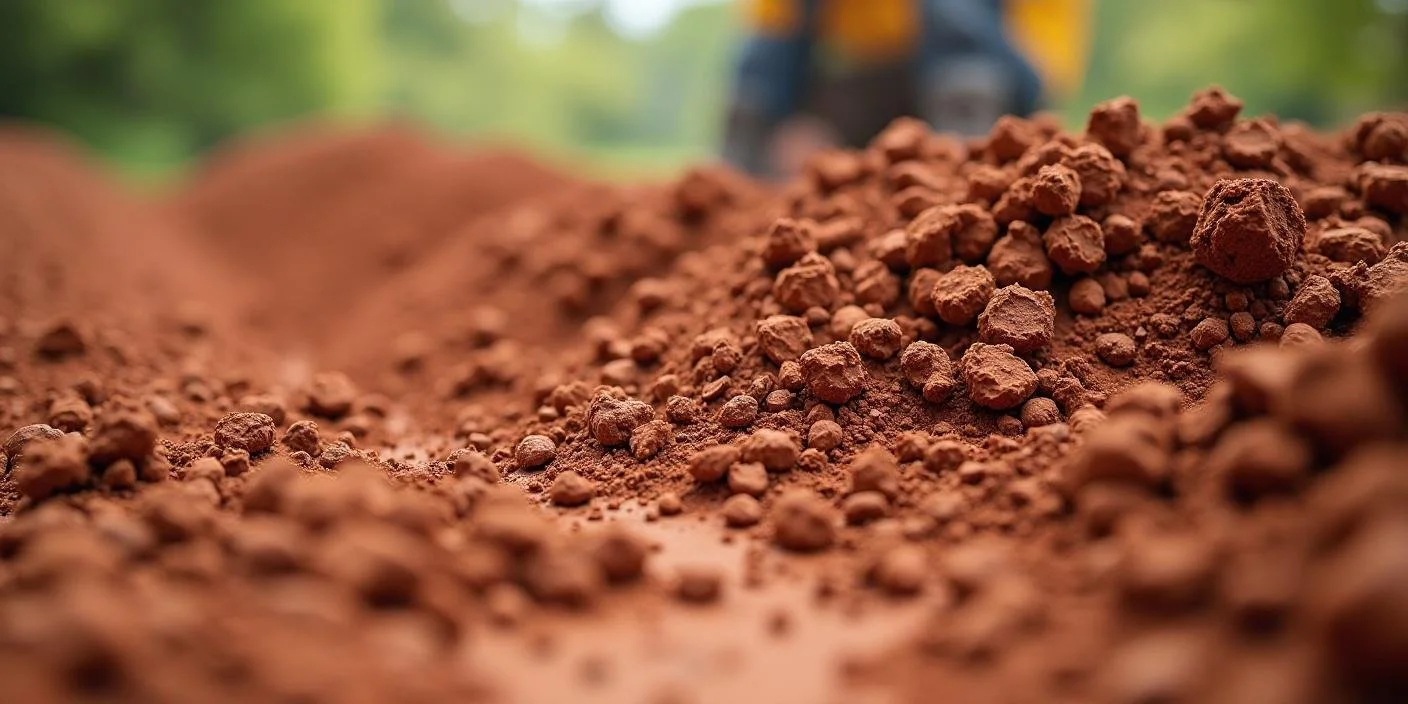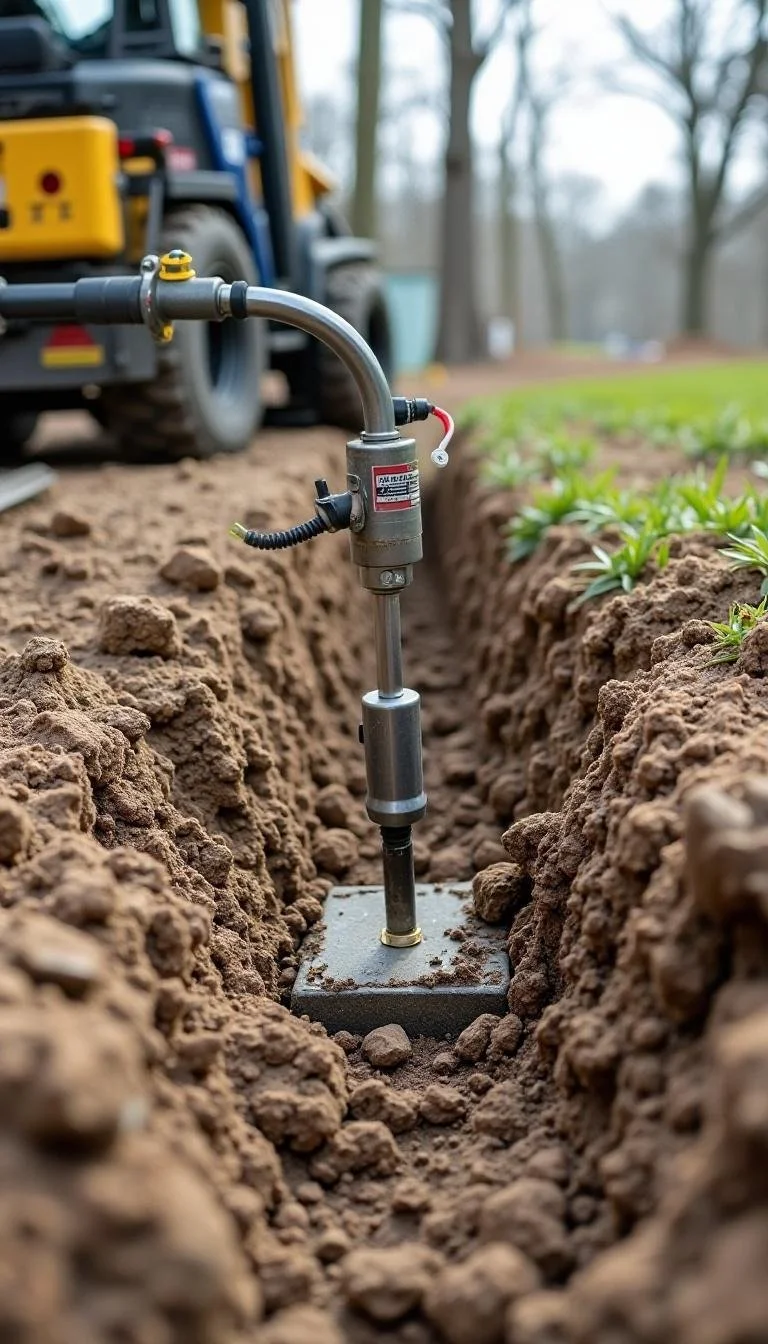24-hour Customized Solutions for Every Home
Soil Stabilization for Foundations Asheville NC
Based in the heart of Hendersonville, NC, Functional Foundations extend expert services to the surrounding areas, dedicating ourselves to ensuring the longevity and security of your home.
Functional Foundations offers soil stabilization services in Asheville, North Carolina.
What sets our foundation soil stabilization apart?
24-hour customized solutions for every home
Durable materials for lasting repairs
Transparent pricing without surprises
Commitment to customer satisfaction
Our contractor offers reliable solutions without the burden of excessive costs.
We stand behind our work with a comprehensive service warranty that covers both materials and labor.
Call (252) 648-6476 for soil stabilization solutions
What is Soil Stabilization?
Soil stabilization is the process of strengthening weak ground so it can support weight without moving or sinking.
The purpose of soil stabilization is to prevent foundation settlement and maintain the stability of buildings over time. When the ground is soft, wet, or loose, it can’t hold up a structure well. That’s why stabilization is used to improve strength and stop shifting.
This process works by changing the moisture content or adding materials that hold the soil together. If soil moisture is too high, the ground may need to dry before treatment. In other cases, water is added to help blend materials evenly.
The effectiveness of soil stabilization depends on the type of soil, its water-holding capacity, and the method employed. When done right, it prevents future movement and protects the structure above from cracks, tilting, or sinking.
We Offer Soil Stabilization Services for Foundations Near You
Our soil stabilization service supports structures by strengthening the ground beneath them using proven soil stabilization techniques for foundation support.
We treat weak or shifting ground to stop structural movement and future damage. When the soil under a home becomes too soft or uneven, parts of the structure can sink or tilt. This causes cracks in walls, uneven floors, or doors that won’t close. We correct these issues by improving the ground's ability to hold weight.
Each treatment begins with a full inspection of the soil's condition. Our team checks for depth, type, and moisture levels. Once we understand the cause of the problem, we choose a solution that makes the ground firm and steady. Some areas may require compaction, while others require material to be added to maintain stability.
The repair process is clean, efficient, and built to last. We don’t dig up your whole yard or disrupt your living space. Most treatments are done in stages, and your home stays safe and usable during the work. Afterward, we confirm that the ground is stable and no longer shifting.
We provide clear answers, written reports, and guidance for what comes next. Whether your home is new or decades old, we help you understand how the ground has changed and how we corrected it. Our goal is to leave you with lasting stability and peace of mind.
Call (252) 648-6476 now!
Our Soil Stabilization Process
Our soil stabilization process follows a step-by-step plan to correct weak ground and protect your structure from future damage.
Step 1: Inspect the Area
We begin by inspecting the entire problem area, both inside and outside the home. This includes visible cracks, floor slopes, and signs of ground movement near the base of the structure.
Step 2: Test the Soil
We take readings to measure depth, moisture levels, and the density of the soil under the damaged section. These tests show whether the ground is shifting, too wet, or breaking down under pressure.
Step 3: Choose the Right Method
We select a solution based on the type of soil and the size of the problem. This could include compacting the ground, adding dry material, or using injection to fill loose areas.
Step 4: Apply the Treatment
We apply the chosen method using equipment designed for tight spaces and occupied homes. Work is done carefully, with minimal disruption to the property or structure above.
Step 5: Check for Stability
After treatment, we recheck the area to make sure the soil is stable and no longer moving. We ensure solid load support and verify that the work meets structural requirements.
Step 6: Final Report and Follow-Up
We provide you with a clear report detailing what we did, why it was necessary, and how it helps protect your home. If needed, we schedule a follow-up to confirm the results hold over time.
Call (252) 648-6476.
Common Soil Stabilization Methods
Lime Stabilization: Lime is used as a stabilizer for clay soils. It reacts with moisture and clay minerals to reduce plasticity and improve strength. This method is often used to correct soft, wet subgrades.
Cement Stabilization: Cement binds soil particles together to form a strong base. It increases stiffness and reduces settling, particularly under heavy structures such as homes or roadways.
Fly Ash Stabilization: Fly ash, a byproduct of coal combustion, is used to improve soil texture and enhance its load-bearing capacity. It works well when combined with lime or cement, particularly in wet soils.
Chemical Stabilization: Chemical agents, such as polymers, chlorides, or silicates, are used to modify soil behavior. These treatments control water movement, improve density, and help stabilize loose or sandy soils.
Mechanical Compaction: Compaction uses machines to press the soil into a denser, more stable layer. This method increases strength and reduces air pockets, which helps prevent settling over time.
Soil Modification with Blended Materials: Blended materials, such as crushed stone, gravel, or recycled road base, are mixed into the existing soil. This improves grain size and load distribution, creating a stronger foundation layer.
Injection Techniques (e.g., Grouting or Polyurethane Foam): Injection methods involve pumping stabilizing materials into the soil to fill voids and lift settled areas. This technique is used to correct settling beneath slabs and foundations without excavation.
Do Soil Stabilization Techniques Help With Foundation Problems?
Soil stabilization techniques help with foundation problems by improving the strength and stability of the ground beneath a structure.
When soil particles are loose, soft, or poorly compacted, they cannot support the weight of a home. Over time, this leads to settlement, parts of the house sink, shift, or crack. This is one of the most common causes of foundation problems, especially in areas with clay-heavy or water-sensitive soils.
One common soil stabilization method is injection, where material is pumped into the soil under pressure. This fills gaps, binds particles together, and increases load-bearing strength. Injection can use grout, foam, or a chemical solution, depending on the type of ground. The material hardens quickly, creating a solid base that distributes the home's weight more evenly.
Other techniques may involve mechanical compaction or the addition of stabilizing agents to alter the soil's behavior under pressure. These methods enhance stability by improving the ground's ability to resist water, weight, and movement, compared to untreated soil.
Stabilizing ground conditions is a proven technique for extending the life of structures and reducing the need for repeated repairs. Once stabilized, the soil maintains its long-term strength, reducing the risk of future movement or damage.
Call (252) 648-6476 now!
Call (252) 648-6476 for Soil Stabilization in Asheville
Functional Foundations fixes shifting ground beneath your home with proven solutions that stop movement, prevent damage, and restore stability.
If you've noticed cracked walls, sinking floors, or signs of settlement, the problem may be more extensive than surface repairs can address. Our team utilizes field-tested methods to treat soils beneath your structure, providing it with the strength it needs to remain stable in the long term. We work directly with homeowners across Asheville who need honest answers and lasting results.
Our service begins with a full inspection and soil testing. We explain the issue in plain language, show you what’s happening underground, and apply the right method to stop it. From compacting soft fill to using injection-based solutions, we keep your home supported and level, without unnecessary demolition.
Call (252) 648-6476 now to schedule your inspection or ask a question. We’re local, experienced, and ready to help you take the next step toward a safer, more secure home.
Functional Foundations
Open 24 hours
-
Yes, a chemical treatment is safe for the soil under your house when done correctly. It helps strengthen the ground and stop future movement without harming the environment.
-
Soil compaction is important before or after a repair because it keeps the ground from moving again. Packed soil holds weight better and helps prevent future damage.
-
Clay soil causes more problems than other soil types because it swells when wet and shrinks when dry. This constant change puts pressure on your home, leading to cracks and shifting.
-
Moisture in the ground can affect your home's structure by making the soil soft and unstable. When that happens, parts of your house can sink or pull apart.
-
Soil erosion control helps stabilize the ground by keeping it in place. When water removes soil from around a house, it creates gaps and weak spots. Controlling erosion prevents those gaps and helps the ground stay firm and steady under your home.
-
Soil stabilization can prevent foundation damage by making the ground strong enough to hold the house. When soil shifts or settles, it puts stress on the structure. Stabilizing the ground stops this movement and protects the building from damage.
-
Injection is used for soil stabilization under homes to fill loose areas and strengthen weak spots. It pushes material into the ground without digging. Once it hardens, the treated soil becomes strong enough to support the home again.



